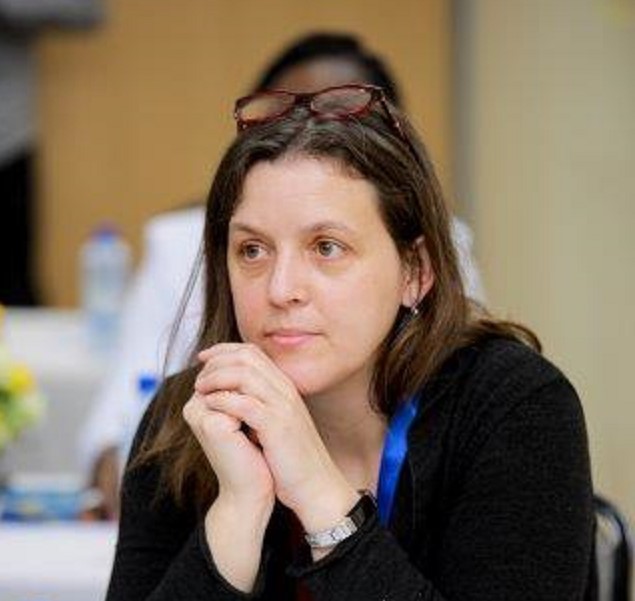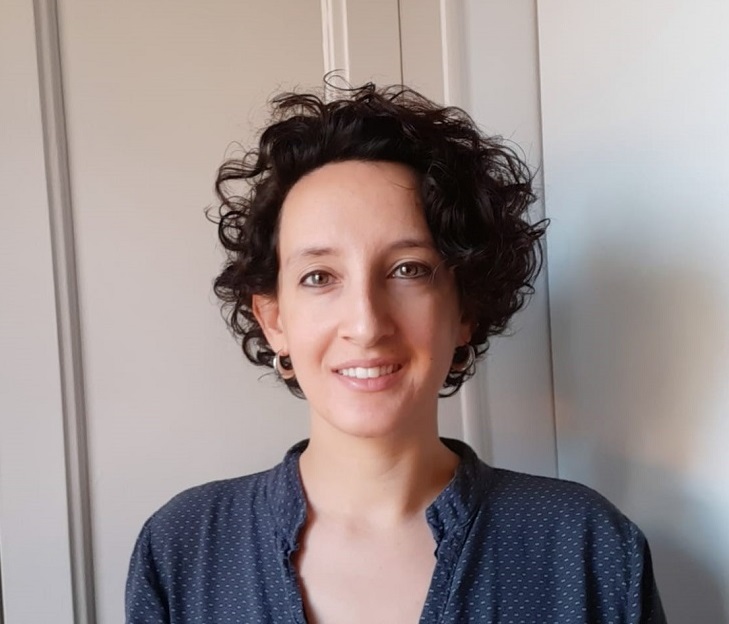Anne Laure Humbert
Oxford Brooks University, UK
Dr. Anne Laure Humbert is Professor of Gender and Statistics and Co-Director of the Centre for Diversity Policy Research and Practice at Oxford Brookes University. She has worked extensively on developing methodologies and indicators for measuring gender equality. Recently, she has contributed to the Horizon 2020-funded project UniSAFE, which seeks to measure and address gender-based violence in higher education in Europe. Her recent publications include: From Gender Regimes to Violence Regimes: Re-thinking the Position of Violence, Social Politics (2022); Undoing the Nordic Paradox: factors affecting rates of disclosed violence against women across the EU, PLOS ONE (2021).
Abstract
Applications of the MAIHDA approach to intersectional analysis: illustrations using the UniSAFE survey on gender-based violence in research organisations in Europe
Reconciling the needs for an intersectional lens with that of the requirements of quantitative methods is not without challenges. This can be achieved by taking a categorical approach to look at specific groups, as opposed to anti-categorical approaches more traditionally aligned with qualitative methods (McCall, 2005). A body of literature is increasingly discussing how to transpose intersectionality into more advanced quantitative methodology (Bauer et al., 2021; Merlo, 2018). These works seek to use quantitative analyses that will provide answers to the following questions (Bauer et al., 2021): how are sets of social relations constituted, and along what axes? How do these sets of social relations reflect interpersonal, often historical, mechanisms of oppression, marginalisation and/or minoritisation? How are these sets of social relations shaped by a wider complex system of structural inequalities? Is intersectional disadvantage ‘additive’ or ‘multiplicative’?
The operationalisation of intersectionality into quantitative methods, to find answers to these questions, has tended to involve the use of cross-tabulations, analysis of differences between means or the use of regression models. However, the use of these methods is not without criticisms and calls have been made to improve the quantitative approaches used to answer these questions (Saperstein & Westbrook, 2021). Recent methodological work has shown how multi-level models could be used to take intersectionality into account (Evans et al., 2018; Merlo, 2018). First, these models avoid systematically taking the dominant category as a reference and the yardstick against all ‘other’ groups is measured. Second, they solve the problem of the number of interactions to specify, which increases geometrically, by including identity categories as a level in the model specification and thus reducing the increase in the number of parameters to a linear one. Multi-level modelling is also advocated to combine variables located at the individual level with organisational or national level variables, due to its potential to analyse identities in relation to wider structures of inequalities (Bauer et al., 2021; Spierings, 2012). The term MAIHDA, Multilevel Analysis of Individual Heterogeneity and Discriminatory Accuracy, (Merlo, 2018) describes this approach, and assesses: between-stratum variance; within-stratum heterogeneity; discriminatory accuracy by looking at the magnitude of within- and between-stratum variance relative to each other (VPC); how much between-stratum variance is explained by additive terms (PCV); and predicted probabilities or expected (mean) values of dependent variables for each stratum (Evans, 2019).
This presentation will outline how this multi-level intersectional approach (MAIHDA) has been applied in the EU-funded UniSAFE project to measure gender-based violence in universities and other research organisations in 15 European countries. The presentation will provide results from the initial analysis of these data across different levels (Humbert et al., 2022), and extend this original analysis by discussing new results stemming from new methodological work that considers the effects of the granularity of the intersectional strata used in the MAIHDA approach (Humbert, unpublished).
Maria Rodó-Zárate
Universitat Pompeu Fabra, Spain
Dr. Maria Rodó-Zárate is a tenure-track professor at the Political and Social Sciences Department. She is graduated in Political Sciences (UAB), Master in Women, Gender and Citizenship Studies (UB) and PhD in Geography (UAB). Her research focuses on the study of social inequalities from an intersectional, spatial and emotional perspective applied to issues such as the right to the city, gender-based violence or LGBTI-phobia. She is interested in the spatial articulations among social categories such as gender, class, ethnicity, sexual orientation, age or (dis)ability, and their effects on lived experience. In 2021, Maria Rodó-Zárate was awarded a European Research Council (ERC) Starting Grant to lead the INTERMAPS project, which aims to contribute to the study of inequalities and discriminations by proposing a specific framework that can establish a systematization and characterization of intersectional dynamics.
Maria Rodó-Zárate has developed specific methodologies for the study of intersectionality such as the Relief Maps, which won the Ramon Molinas Award (2018) for the best social impact project. She has been a visiting research fellow at the Graduate Center of the City University of New York (United States), Universidade Estadual de Ponta Grossa (Brasil) and University College Dublin (Ireland). She has also been a PNDP/CAPES postdoctoral researcher at UEPG (2015), Juan de la Cierva postdoctoral researcher at Universitat Oberta de Catalunya (2016-2020) and Serra Hunter lecturer at Universitat de Barcelona (2020-2022).
Abstract
Relief Maps: new visual methods for intersectional data collection and analysis on discriminations from a social, geographical, and psychological perspective
Relief Maps are a methodological tool created by Maria Rodó-Zárate for studying social inequalities from an intersectionality perspective, in three dimensions: the social dimension (positions and identities of gender, social class, ethnicity, age, etc.), geography (places in daily life) and psychology (effects on emotions). The tool, rooted in intersectional feminist theories and debates on feminist geography, was initially thought to be developed in paper as a useful methodology for qualitative research and training in social sciences. This methodology was developed out of the doctoral research into feminist geographies by Maria Rodó-Zárate, specifically in relation to youth access to the public urban space in a medium-sized Catalan town, Manresa. Although the tool, strongly rooted in intersectional feminist theories and debates on feminist geography, was initially very useful for qualitative research and teaching in social sciences, the fact that it used paper and involved drawing by hand was a major hurdle to its use with large samples. For this reason, in 2018, Maria Rodó-Zárate with the support of Universitat Oberta de Catalunya designed the digital version of Relief Maps: an open-access and free tool that allows both qualitative and quantitative analysis and visualization of large samples data. Within the framework of INTERMAPS project, a new digital tool has been developed. It includes a visual way of collecting data on intersectional positions, based on the apple metaphor, a new interactive model for the Relief Maps and, building on feminist, queer, antiracist, decolonial and humanistic perspectives, it also proposes a GIS tool for collecting and visualizing georeferentitated data on the lived experience.
Relief Maps are available to be used not only for social science or health sciences research but also for teaching activities, as a pedagogical tool, and for consulting and management purposes. Relief Maps offer new possibilities for the government sector, organisations working for social change, and enterprises willing to carry out diagnosis and define action plans to better understand and address inequalities.
Katja Upadyaya
University of Helsinki, Finland
Dr. Katja Upadyaya is an Associate Professor (Docent) and Lecturer at the Faculty of Educational Sciences, University of Helsinki, Finland. Her academic expertise encompasses a diverse range of topics within the field of educational psychology. Driven by a passion for understanding and enhancing well-being, she has dedicated her research endeavors to exploring occupational and academic well-being, motivation, and research methodology.
In addition to her contributions to the field of educational sciences, Katja Upadyaya has delved into the dynamics of teacher-student and parent-child interactions. Her research extends to the well-being of teachers and school principals, shedding light on crucial aspects of the educational environment. Katja Upadyaya‘s comprehensive approach to research also includes ongoing investigations into children’s well-being, socio-emotional skills, and parental burnout.
With a commitment to lifelong learning, Katja Upadyaya continues to make significant strides in advancing our understanding of key factors that influence well-being and motivation in educational settings. Her multidimensional research portfolio underscores a dedication to creating positive impacts on various aspects of education and human development.
Abstract
Students’ academic well-being, socioemotional skills, and differences related to gender and other demographic factors
Students face various challenges in school, such as complex tasks, demanding learning situations, and changing social environments, which they must address using their personal resources and abilities (Salmela-Aro & Upadyaya, 2020). Such challenges, especially when prolonged, may also cause study burnout symptoms and imbalance between demands and personal resources. High resources, in turn, often lead to well-being and study engagement (Salmela-Aro & Upadyaya, 2020). Study engagement and burnout have often been considered as factors of academic well-being. They both consist of three dimensions, engagement describing one’s energy, dedication, and absorption in studies, and burnout describing exhaustion, cynicism, and feelings of inadequacy (Upadyaya & Salmela-Aro, 2013). Both academic well-being and socio-emotional skills are important for students’ positive development (Upadyaya & Salmela-Aro, 2021).
Socio-emotional skills are seen as essential future skills, crucial for functioning in society, and their development begins in school. According to the OECD framework, students’ socio-emotional skills can be categorized into five areas: 1) task performance skills (perseverance, self-control), 2) emotion regulation (optimism, academic resilience), 3) collaboration skills (maintaining good relationships, empathy), 4) openness (curiosity, creativity), and 5) communication skills (sense of belonging, sociability) (Chernyshenko et al., 2019, Kankaras & Suarez-Alvarez, 2019). These skills are important for interacting with others and for individual functioning (Huttunen et al., 2024). Recent research highlights the significance of socio-emotional skills for academic well-being: good socio-emotional skills often support student engagement and can prevent academic burnout (Huttunen et al., 2024; Salmela-Aro et al., 2021). However, differences related to gender and demographic factors such as socioeconomic status may emerge in engagement, burnout, and socio-emotional skills.
In the light of these studies, the importance of academic well-being and socio-emotional skills among students are presented in more detail, discussing some differences related to gender and other demographic variables.

Keming Yang
Department of Sociology, University of Durham, UK
Dr. Keming Yang is an Associate Professor of Sociology at University of Durham in the UK. He earned his BA and MA at Nankai University (Tianjin, China) and a PhD in sociology from Columbia University (New York, USA). He used to teach at National University of Singapore and University of Reading. His research areas include economic and political sociology in the context of China, loneliness and social isolation from a sociological perspective, and social science research methods. He is the sole author of five monographs, including the most recent Analysing Intersectionality: A toolbox of methods, and has published many academic and non-academic articles in these areas.
Abstract
Three Questions about Intersectionality: What is it, why does it matter, and how to analyse it?
Since the 1980s, the notion of intersectionality has become an increasingly important topic not only in the social sciences but for humanities, literature, legal studies, and many other areas as well. It has also become a guiding principle followed by some political activists, campaigners for social justice and inequality, social movements, etc. Not only its meaning has become less clear, more importantly for students of social sciences it remains a great challenge to analyse it despite the enthusiasm for taking it seriously. Like some of other popular social science concepts, such as social capital and social network, we should not let its popularity undermine the scientific rigour of our research on this important social phenomenon. Drawing on the recent literature and Dr. Yang’s recent publications on this topic, in this lecture he aims to clarify its meaning and introduce methods for analysing it by answering three interrelated important questions: what does intersectionality mean, why does it matter, and how should we study it in a scientifically rigorous way? Students of any subject (not necessarily social sciences) interested in social inequality, social exclusion, etc., and social science research methods are welcome to engage in discussions with him after the lecture.


